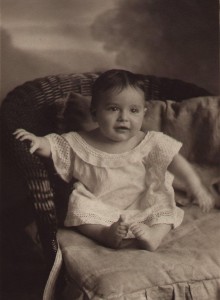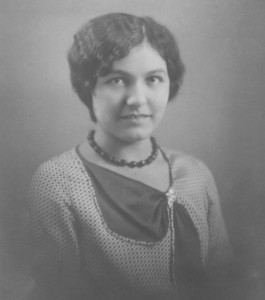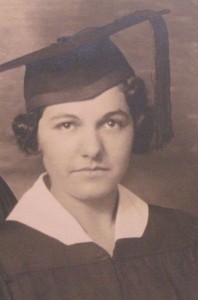Aunt Freda
Is it just me, or is there something about this year, in particular? It seems there are so many 100-year anniversaries of note this year – already, and it is only April. What was it about 1912 as a time in this country?
The news is always reporting about one or another anniversary. The sinking of the Titanic is a big one, getting a lot of coverage right now. And in my area, Boston, it is also the One Hundredth Anniversary of Fenway Park, home of our Boston Red Sox. It is also the one hundredth anniversary of the Bread and Roses Strike in Lawrence Massachusetts. Textile factory workers, many young immigrant women, went on strike for more than 2 months looking for higher wages in response to a new law shortening the work week. Massachusetts had passed a law limiting the work day to 8 hours. And the first cherry tree saplings which inspired the annual Washington DC Cherry Blossom Festival were presented by the City of Tokyo to the City of Washington one hundred years ago.
So what does all of this have to do with Aunt Freda?
Freda started school as a five year old, speaking only Yiddish and being left-handed. This was probably the Fall of 1917. The teacher tied her left hand behind her back — all the while speaking English to her. What an introduction to formal education!
Nevertheless, she must have liked school, and she was a good student. When she was about 12 years old, the family moved from Syracuse to Buffalo, New York, in about 1924. So she went to high school in Buffalo.

We think she finished high school in 3 years. Her high school quote was: “And still they gazed and wonder grew that one small head could carry all she knew.” We know she had aspirations to more education, and she went on to college, even though it was the Great Depression.
Her brother, Iz, remembered this disruption during her college days: “When she was in college, we were subject at University of Buffalo to a tuberculosis check. You know, they gave everybody this tuberculosis check and they inject it, stuff under your skin and if you showed a positive reaction, then you were told to go and get x-rays, have your lungs x-rayed. Well some crazy x-ray specialist in Buffalo sent her a written report to the effect that he had never seen one so young with so much infection, TB infection in her lungs. Now you can imagine how horrified my parents were. And the family doctor read that report and said, “Look, she’s got to drop —” She was majoring in chemistry. She’s gotta drop out of college right away and, you know, rest in bed for months. Maybe we can forestall having to go to a sanitarium.” Well, we found out that night that the Arbeiter Ring, which had a great deal of strength in New York City among the garment workers, and TB was rampant among them and they worked in sweat shops and there was all sorts of lint flying around. The Arbeiter Ring had established a TB sanitarium in Liberty, New York, in the Catskills and he got the bright idea of sending my mother and my sister up to the Catskills for vacation. And in the meantime — somewhere near Liberty — and in the meantime they would make an appointment to have her examined at the TB sanitarium. I remember I drove up there, I drove them up. And I went to the sanitarium with my mother and my sister and there was — the doctor in charge of the sanitarium was extremely understanding and very nice and said, “Well, now, don’t, don’t get too upset, Mrs. Greenberg. I have had TB myself. That’s why I am in this work. I’m going to take your daughter away and give her some x-rays and so forth.” He came back in about a half an hour and said, “The guy was all wrong. She doesn’t have the slightest case of TB. What she has is some calcified spots on her lungs.” And he said, “Everybody over the age of 21 — practically anybody — cause we all come in contact with some TB germs, bacilli. And what happens in the normal body is that, as a defense, the lungs form calcified spots around there and that’s the end of it. That’s all she’s got.”

There was no more family history about this possible disruption to her college days. In fact there is some thought that she managed to finish in 3 years rather than the usual 4. We do know that she graduated in June 1932. (I wrote some about this a couple of years ago – click here if you want to go back to the first post about education in this family.) She was just 20 years old. Freda had aspirations to medical school – she was the scientist in the family. But because it was the Great Depression (and perhaps because she was expected to help support her brother’s additional schooling) the family could not support her in this. No matter the reason, it was a bitter disappointment to her.
It seems likely that the family hoped/expected that she would go to work as soon as possible and help support the family. I was told by the registrar’s office at University of Buffalo that it was not uncommon for young adults to stay in school as long as they could due to the scarcity of jobs during this time. Her first job out of college was at DuPont in Buffalo. She had competed with a huge group of people for one of two jobs they had available. She worked in a lab testing the permeability of what was to become cellophane. We don’t know exactly how long she held this job, but it was a major feat that she got it.

Leave a Reply